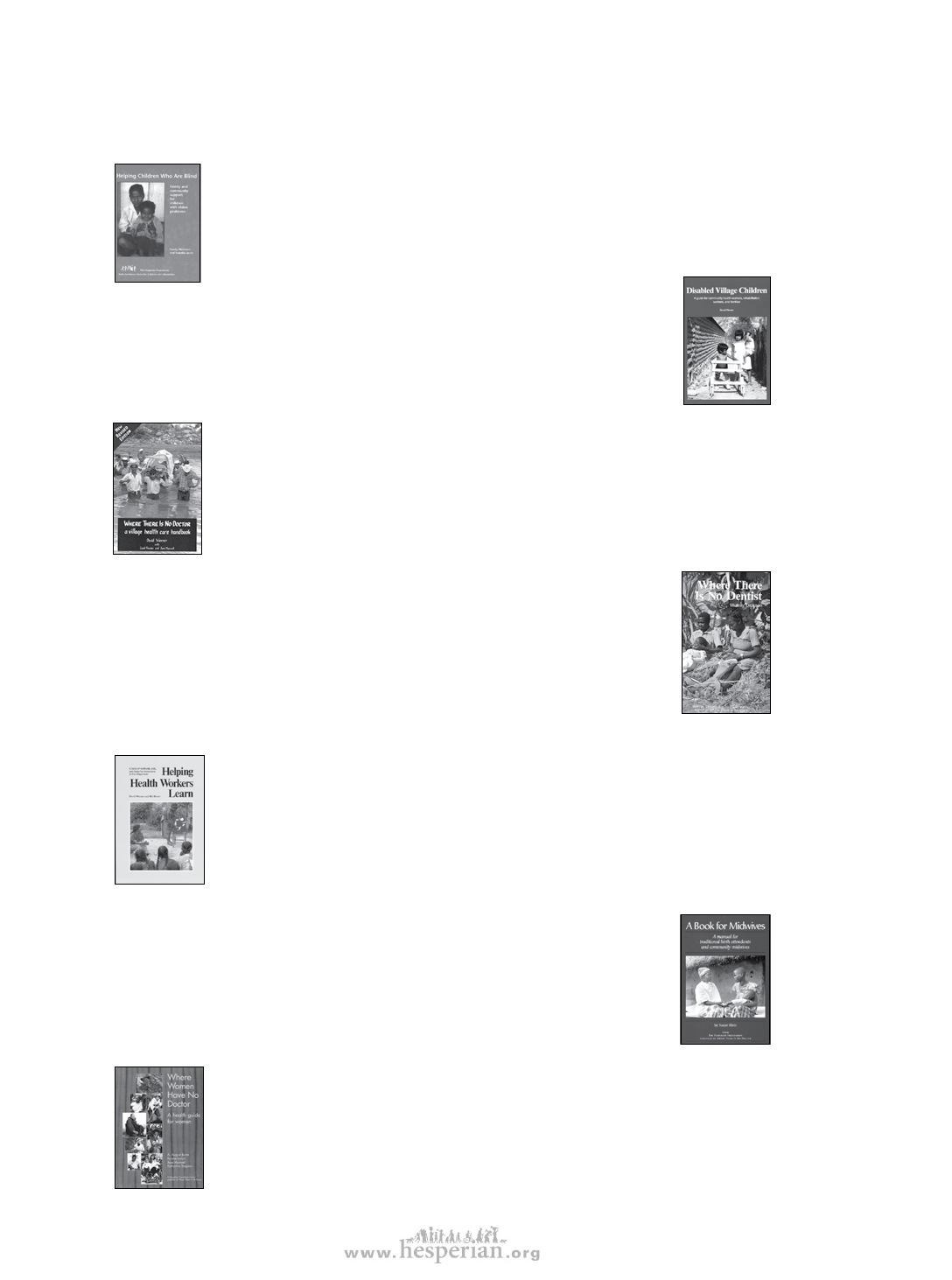
Other books from the Hesperian Foundation
Helping Children Who Are Blind, by Sandy Niemann and Namita
Jacob, aids parents and other caregivers in helping blind children
develop all their capabilities. Topics include: assessing what a child
can see, preventing blindness, moving around safely, teaching
common activities, and more. 192 pages.
Disabled Village Children, by David Werner, covers most common
disabilities of children. It gives suggestions for rehabilitation at the
village level and explains how to make a variety of appropriate,
low-cost aids. Emphasis is placed on how to help disabled children
find a role and be accepted in the community. 672 pages.
Where There Is No Doctor, by David Werner with Carol Thuman
and Jane Maxwell. Perhaps the most widely used health care
manual in the world, this book provides vital, easily understood
information on how to diagnose, treat and prevent common
diseases. Emphasis is placed on prevention, including cleanliness,
diet, and vaccinations, as well as the active role people must take in
their own health care. 512 pages.
Where There Is No Dentist, by Murray Dickson, shows people how to
care for their own teeth and gums, and how to prevent tooth and gum
problems through hygiene, nutrition, and education, in the home,
community, and school. This book gives detailed, well illustrated
information on using dental equipment, placing fillings, taking out
teeth, and more. A new chapter includes material on HIV/AIDS and
oral health. 237 pages.
Helping Health Workers Learn, by David Werner and Bill Bower.
An indispensable resource for teaching about health, this heavily
illustrated book makes health education fun and effective. Includes
activities for mothers and children; pointers for using theater,
flannel-boards, and other techniques; and many ideas for producing
low-cost teaching aids. This people-centered approach presents
strategies for effective community involvement through participatory
education. 640 pages.
A Book for Midwives, by Susan Klein, is for midwives, community
health workers and anyone concerned about pregnant women and their
babies. An invaluable tool for training as well as a practical reference,
the author covers helping pregnant women stay healthy; care and
complications during labor, childbirth and after birth; family planning;
breastfeeding; and homemade, low-cost equipment. 528 pages.
Where Women Have No Doctor, by A. August Burns, Ronnie
Lovich, Jane Maxwell, and Katharine Shapiro, combines self-help
medical information with an understanding of the ways poverty,
discrimination, and cultural beliefs limit women’s health and access
to care. An essential resource on the problems that affect only
women or that affect women differently from men. 584 pages.